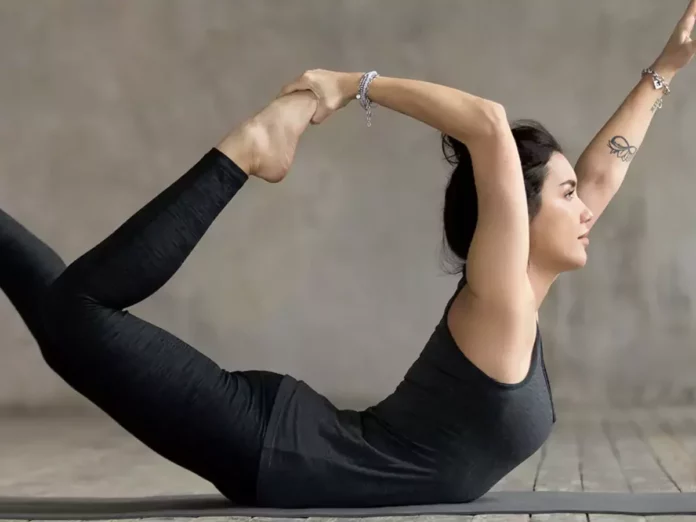Yoga can be practiced in many different ways. There are many goals, aspirations, and paths. Ancient yogis used yoga as a meditation tool and path to enlightenment. Most people now practice yoga to improve strength and flexibility, reduce anxiety and stress, and boost their energy levels. Yoga is not only a great mind-body exercise, but it also promotes self-care. Yoga can help you find the balance, ease and connection in your life if you feel worn out and emotionally and mentally exhausted.
Table of Contents
What is Personal Care?
Self-care means taking positive steps to improve your health, well-being and ability to deal with challenges in life. Self-care can be any physical, mental or spiritual activity that you do to improve your health and energy.
A healthy, balanced lifestyle is a life that includes self-care. Self-care is an important part of wellness. It helps us to be better parents, employees and friends. Self-care helps us maintain balance and be our best. Self-care is essential to prevent burnout, emotional exhaustion and apathy.
What is Yoga for Taking care of oneself?
Self-care can be the most important part of our health and wellbeing, but it is difficult to make time for ourselves, especially when we feel guilty about doing things that bring us joy. Yoga can be a great tool for self-care because it promotes compassion, kindness and love. It can help you gain the awareness, introspection and contemplation necessary to discover your true needs. Consistent practice can provide insight into how to address these needs creatively and effectively.
The study confirmed the benefits of yoga in self-care. Yoga participants reported “significantly greater self-care and less emotional exhaustion, depersonalization and fatigue” after completing an 8-week intervention. However, the control group did not show any change. After their yoga classes, the yoga group scored significantly higher in self-care, mental health, emotional exhaustion and depersonalization.
Self-care with yoga tools
Yoga can be used in a variety of ways to improve your physical, mental, and spiritual wellbeing. Yoga is a powerful tool for self-care because it is a sustainable habit that promotes optimum health. It also strengthens emotional resilience, which helps us to deal with stressful situations and prevent burnout.
1. Stress reduction is important for wellness
Numerous studies have shown that stress is linked to many health issues, such as heart disease, high cholesterol, insomnia, depression, and weight gain. Stress-reduction techniques like guided imagery, yoga, breathing exercises and mindfulness all help to reduce stress. Regularly practicing these methods is the best way to achieve a calmer, happier state of mind.
Stress is a sign of something wrong in your life, whether it’s physically, mentally or emotionally. It could also be a sign spiritually. There are many yoga techniques that can help you find inner peace and calm if you feel stressed. Yoga techniques can reduce stress but they should not be used as a quick fix for deeper issues.
- Practice pranayama: Deep breathing reduces anxiety and promotes relaxation. This technique is effective because it increases oxygen in your bloodstream, and releases endorphins that produce happiness and contentment. Include basic diaphragmatic breaths in your daily practice. When you feel particularly frazzled, try a few minutes practicing Sama Vritti and Nadi Sodhana Pranayama.
- Mediate: By increasing alpha wave activity in the brain, meditation reduces cortisol levels, a stress hormone. Focus on your thoughts and feelings without judging them when you meditate. Meditation can help people deal with stressful situations better because they learn how to control their emotions instead of letting them run wild. Try our inner peace or heart chakra meditations to calm yourself down.
- Have a go at quieting yoga stances: Calming positions, like forward folding and upper backbends reduce muscle tension and calm the nervous system. They also promote a restful night’s sleep. These poses also reduce stress hormones like cortisol and adrenaline.
- Include gratitude: Think of three things for which you are grateful or three positive events from your day. This will help you to shift your mindset from negative to positive. Gratitude can bring happiness and joy into your life. Explore other ways you can incorporate gratitude into your practice of yoga.
2. Immunity and physical health can be improved.
Asanas and pranayamas are a great way to build muscle strength and boost your immune system. Regular exercise improves cardiovascular health, muscle tone, bone mass, flexibility, strength and coordination. This leads to a better quality of sleep and a reduced risk of injury.
Yoga lifestyles promote a healthy eating plan that includes fruits, vegetables, whole grains, protein sources low in fat, and dairy products. This eating style promotes optimal digestion and nutrition absorption.
3. Create affecting balance
Meditation and yoga teach us to be present and mindful in stressful situations. This form of meditation teaches us to be present in the moment and not get caught up with past events or future worries. Instead of reacting, we become more aware of our emotions and thoughts. We can decide which feelings to act on and which to let go by becoming aware of them.
By focusing our attention on our breathing, we also develop an awareness of the body and its sensations. It helps us identify where tension is present in our muscles and allows us to release the energy. Asana improves circulation and cardiovascular function, burns calories, and reduces fatigue. All of these factors contribute to a better mood and more vitality.
4. Build up social connections
Self-care does not have to be a silent, solitary activity. Deep connections and healthy relationships are essential to your well-being. Attending a regular yoga class allows you to invest time and effort into developing and maintaining relationships. Regularly attending a yoga class gives you an opportunity to meet people who share similar interests.
5. Spiritual relation and higher purpose
Yoga asanas and pranayama can help you connect spiritually with yourself through meditation. Meditation is the act of sitting still and focusing on something, like your breath or mantra. When you meditate outside, nature can inspire you. Consider joining a group if you don’t feel comfortable doing it alone. There are many studios that offer classes designed to promote spirituality. You can also visit an ashram if you want a more profound spiritual experience.
How to do yoga for self-care in 5 easy steps
Self-care can be incorporated into your daily life in many different ways. These tips will help you to ensure that self-care is a regular part of your life. Here are five simple steps you can take to incorporate self-care in your life.
1. Consider your requirements
It’s crucial to know exactly what is causing you to feel off-balance and what makes you happy before you begin taking care of yourself. It may be necessary to let go of unhealthy relationships and patterns in order to find balance. You may need to add or change something mental, physical or spiritual. Reflect on every aspect of your existence! After you have identified them, create a list of the things that are most beneficial, enjoyable and effective.
2. intention of Self Care
You can use simple affirmations to remind yourself of your goals. You can use statements like “I would like to spend more time in meditation” or “I’m open to friendship and connection with others at the yoga studio”. Make them powerful and inspiring and display them where you will see them frequently.
3. Plan ahead
To achieve your goals, you should plan how much time to spend on yourself. Set aside time every day, or at least several times per week, to perform these activities. Don’t forget that a specific amount of time doesn’t guarantee success. Setting up a plan will help you stay motivated and focused.
4. Begin Small
Slowly begin. Expect to not see a change in your life overnight. If you push yourself too hard, you may feel overwhelmed or discouraged. Start out slowly and take baby steps. Start with one thing and add more as you become comfortable.
5. Assess your own self-care
Take note of the things that you are doing well to improve your health and nutrition. Reflect on your successes and use them to motivate you to keep up your routine. Reassess your routine and make changes if you are not enjoying it. Try different options until it feels right. There are many articles about yoga and self-care. You can experiment with the recommendations.
The Conclusion
It’s not always easy to start self-care, but it’s also not difficult. We become happier and healthier when we prioritize our health. We all deserve a happy and healthy life. And we should remember to take some time for ourselves every day. Yoga can help you meet many of your care and wellness needs.







